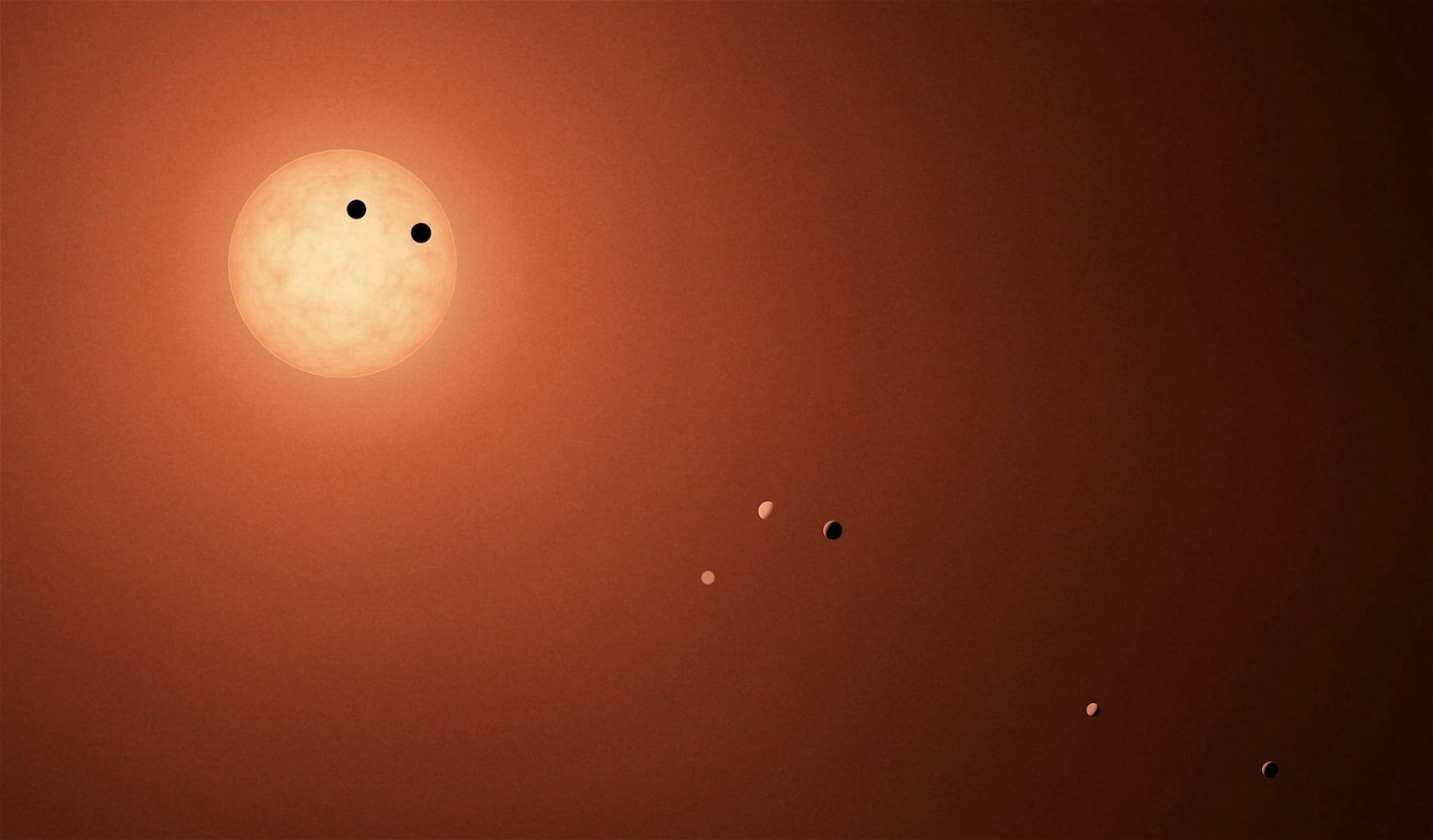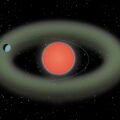New data collected by the James Webb Space Telescope (JWST) suggests a rocky exoplanet located in a planetary system that has long intrigued astronomers shows no signs of having a thick atmosphere.
Since its discovery in 2000, the cold dwarf star TRAPPIST-1, located in the constellation Aquarius more than 40 light-years from Earth, has remained a frequent target of interest to astronomers. The star is accompanied by a planetary system consisting of at least seven known exoplanets and is believed to be even older than our own Solar System at an age of approximately 7.6 billion years.
Due to its unique features, TRAPPIST-1 has been viewed by astronomers as a potential opportunity for the study of the formation and evolution of planets and therefore has been a primary focus for the Webb telescope since its launch in 2021.
Only months ago, it was reported that one of the exoplanets within the system, TRAPPIST-1 b, failed to display any signs of having a thick carbon dioxide atmosphere. TRAPPIST-1 b receives as much as four times as much radiation from its host star as Earth gets from the sun, accounting for its lack of having any substantial atmosphere.
Now, additional data collected by Webb has revealed that one of its neighbors, TRAPPIST-1 c, shows the same lack of a thick atmosphere, despite being at a further distance from its nearest star and, thereby, also in a much cooler location.
There are several factors that contribute to atmospheric composition on such exoplanets, which include volcanic outgassing, as well as atmospheric escape, where the atmosphere of a planet is lost to outer space. Astronomers believe that certain planets, such as those which orbit M dwarfs like the host star in TRAPPIST-1, are among those that are most susceptible to the loss of their atmospheres.
Determining whether an exoplanet possesses an atmosphere requires studies of the light it reflects, methods for gauging its size known as its transmission spectrum, or through observation of the exoplanet’s thermal emission.
Although it remains possible that thicker atmospheres may be present on some of the other neighboring planets in the TRAPPIST-1 system, the lack of such atmospheres on exoplanets TRAPPIST-1 b and TRAPPIST-1 c makes that possibility less likely, according to Sebastian Zieba with Max Planck Institute for Astronomy.
“[T]hat would definitely reduce the amount of planets which might be habitable Zieba, an exoplanet researcher and one of the co-authors of a new paper describing the new JWST findings, said in a statement.
Four times during the months of October and November last year, TRAPPIST-1 was observed by Zieba’s team through Webb’s powerful eye, which collected data that revealed surface temperatures on TRAPPIST-1 c’s star-facing side too warm to facilitate a thick atmosphere.
The planet also would likely have possessed a low amount of water at the time of its formation. All of these factors combine to indicate that the ingredients for life probably would not have existed in abundance on the stony exoplanet.
“If all planets in the system formed in the same way, this would indicate a limited reservoir of volatiles for the potentially habitable planets in the system,” the authors report in their paper. However, it remains possible that other exoplanets in the TRAPPIST-1 system much further away from their host star could be cool enough to have thick carbon-dioxide-rich atmospheres and thereby could be better potential candidates for life.
The team details their new findings in a paper, “No thick carbon dioxide atmosphere on the rocky exoplanet TRAPPIST-1 c,” which was published in Nature on June 19, 2023.
Micah Hanks is the Editor-in-Chief and Co-Founder of The Debrief. He can be reached by email at micah@thedebrief.org. Follow his work at micahhanks.com and on Twitter: @MicahHanks.

